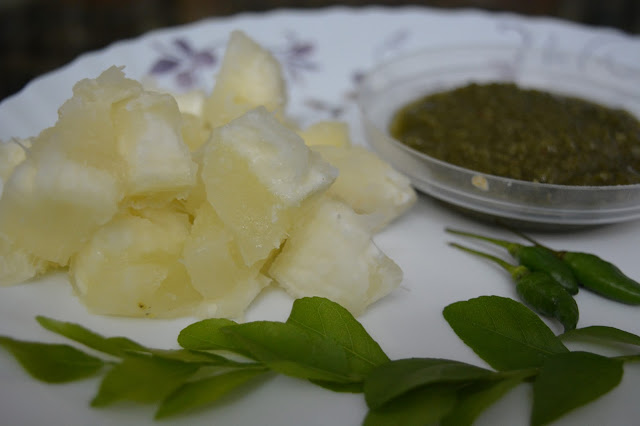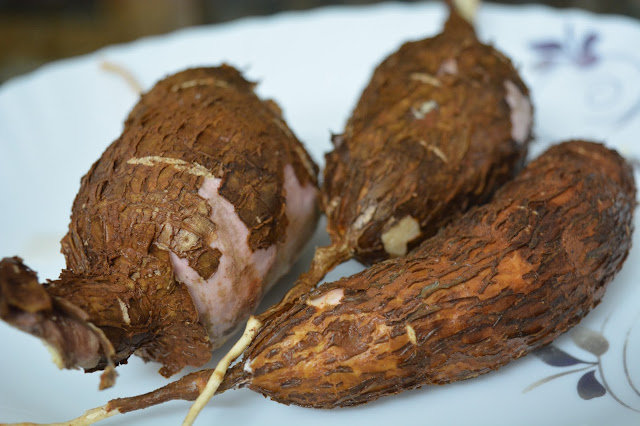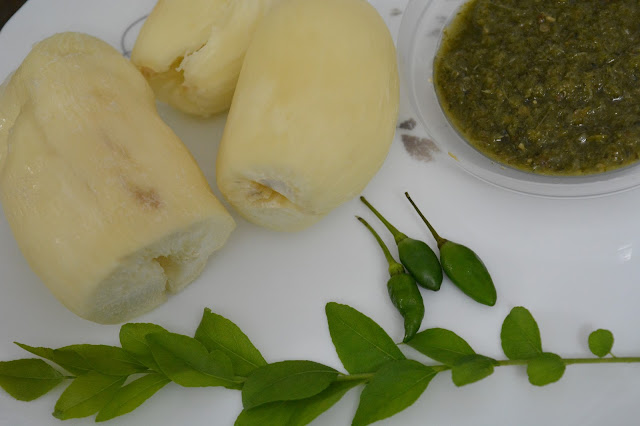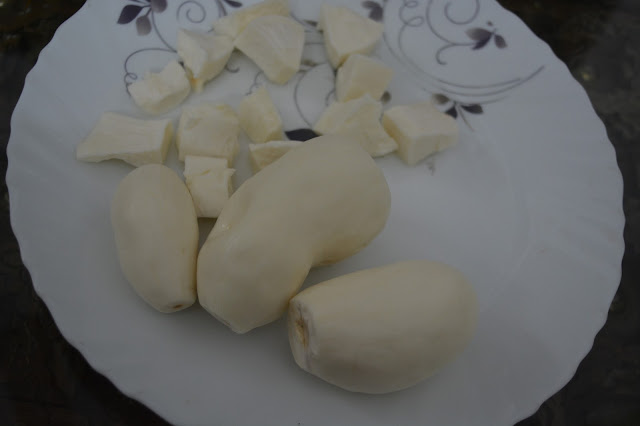Tapioca, 'kappa' as it called
in Malayalam has always had its identity connected to the poorer sections of
the society. It has been perceived as a poor man’s food, for decades. I fondly
remember this popular Malayalam movie scene of the 1980s, in which a classroom teeming
with students stands shell shocked, as the 'Hero’s' lunch box falls down and
cubes of tapioca spread on the floor. Such is the stigma associated with this
very tasty food.
A probable reason for this connection could
be traced back to the very history of tapioca farming in Kerala. Tapioca was
introduced in Kerala by the Portuguese in the 17th century (There are
contradicting literature stating that it was introduced in 1860). The crop was
popularized in Malabar by the peasant migrants of Central Travancore.
Starting from 1942, as the Japanese invaded Myanmar (then Burma), Kerala lost
connection with its source of rice import leading to serious shortage in rice
availability. Tapioca, which was then scarcely cultivated was popularized as a
staple food alternative by the British. This resulted in rice being a very
expensive commodity and those who could not afford it, had to restrain to this
alternative option.
Reminiscences of times of food
shortage thus identifies Kappa as a symbol of poverty. Many of those
memories of the times of shortage would have faded over generations, but the
association of Kappa as a working class food remained.
There are of course, stylized
presentations and marketing strategies tried these days, placing tapioca as an
adventure cuisine. Even those trials are ultimately reinforcing the underlying
class association of this staple diet.
This is not a trend limited to Kerala.
Internationally, tapioca has been reported to be associated with poor man’s
diet. Indonesia has the largest percapita consumption of this food.
Another interesting fact is that cassava’s (technically-the root from which
tapioca is extracted) consumption pattern matches with that of maize. In lower
income groups, the use of rice lowers and the consumption of maize and cassava
rises.
In Vietnam, Tapioca is celebrated as a war food and again relates back to the times of dispair.
A major format of consumption of
cassava is as flour. Gaplek, the most common Indonesian version is reported to
be gluten free and high in carbohydrates. Cassava cakes and other
desserts are made out of this flour. Sabudana, a form of Sago is quite
exhaustively used in North and Central India as diet in times of fasting.
Further, in Latin America cassava is
associated only with marginal farm environments. The largest producers in this
part of the world are Brazil and Paraguay and most of their produce is used as
animal feed. The Brazilian version of tapioca flour is called fariha. In
Colombia and Paraguay the roots are eaten fresh and raw. Casabe is a flat bread
made of dried, mashed roots, which is used in the Caribbean and North-eastern
South America.
Did you know that Kerala and very
rural parts of Vietnam and China are the only places in the world where cassava
is boiled and eaten without processing? FAO states so in one its researcharticle and claims this practice of preprocessed consumption as a very rural practice. (I wonder why Srilanka, which has parallels for almost all Kerala
versions of Tapioca dishes is not mentioned here). Look at this quote from that
paper “Fresh consumption has limited growth potential, and in fact will
probably decline with increasing urbanization and changes in dietary
preferences”.
It is proven that raw tapioca has
cyanide in it and it can be toxic if eaten raw. However, all the people I know
who enjoys munching through even a whole tuber are very much alive
Kerala has improvised quite a bit on
the boiled format of kappa. Seasoning with mustard and adding grated coconut
adds a lot of flavor.Kappa Biriyani, flavored with spices and mixed with beef
used to be a typical wedding eve snack (quite heavy a snack) for Syrian
Christians.
Can mashed tapioca be a replacement
for mashed potato? This is the thought behind me trying this fusion dish.
Here mashed tapioca seasoned with
mustard and grated coconut replaces mashed potato. The sauce, then obviously
had to come from a place of relevance to this cuisine. The Indonesian green
chilly sambal is the inspiration for the sauce. The base of this sauce is
steamed chilies. Not to mention that it was improvised to fit the larger
perspective of the dish. The beef on the plate is basically minced beef steak
in soya sauce and garlic.
Let’s call it the Tapioca Fusion.!!!






